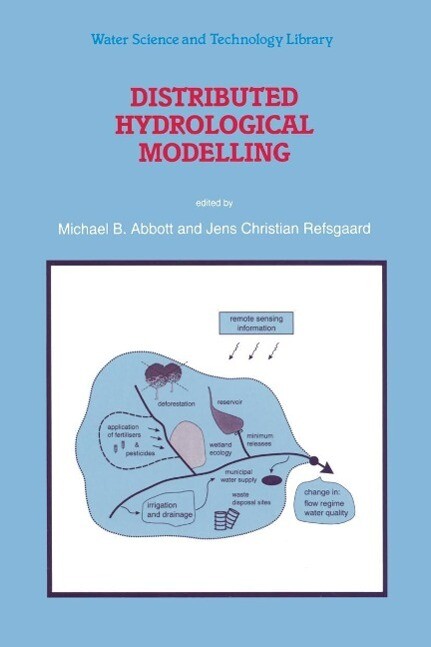
Sofort lieferbar (Download)
It is the task of the engineer, as of any other professional person, to do everything that is reasonably possible to analyse the difficulties with which his or her client is confronted, and on this basis to design solutions and implement these in practice. The distributed hydrological model is, correspondingly, the means for doing everything that is reasonably possible - of mobilising as much data and testing it with as much knowledge as is economically feasible - for the purpose of analysing problems and of designing and implementing remedial measures in the case of difficulties arising within the hydrological cycle. Thus the aim of distributed hydrologic modelling is to make the fullest use of cartographic data, of geological data, of satellite data, of stream discharge measurements, of borehole data, of observations of crops and other vegetation, of historical records of floods and droughts, and indeed of everything else that has ever been recorded or remembered, and then to apply to this everything that is known about meteorology, plant physiology, soil physics, hydrogeology, sediment transport and everything else that is relevant within this context. Of course, no matter how much data we have and no matter how much we know, it will never be enough to treat some problems and some situations, but still we can aim in this way to do the best that we possibly can.
Inhaltsverzeichnis
Foreword. - 1. The Role of Distributed Hydrological Modelling in Water Resources Management. - 2. Terminology, Modelling Protocol and Classification of Hydrological Model Codes. - 3. Construction, Calibration and Validation of Hydrological Models. - 4. Distributed Physically-based Modelling of the Entire Land Phase of the Hydrological Cycle. - 5. Multi-species Reactive Transport Modelling. - 6. Soil Erosion Modelling. - 7. Agrochemical Modelling. - 8. Weather Radar Precipitation Data and Their Use in Hydrological Modelling. - 9. Application of Remote Sensing for Hydrological Modelling. - 10. Geological Modelling. - 11. Use of GIS and Database with Distributed Modelling. - 12. An Engineering Case Study - Modelling the Influences of Gabcikovo Hydropower Plant on the Hydrology and Ecology in the Slovakian Part of the River Branch System of Zitny Ostrov. - 13a. A Discussion of Distributed Hydrological Modelling. - 13b. Comment on `A Discussion of Distributed Hydrological Modelling by K. Beven. - 13c. Response to Comments on `A Discussion of Distributed Hydrological Modelling by J. C. Refsgaard et al. - 14. Hydrological Modelling in a Hydroinformatics Context.
Produktdetails
Erscheinungsdatum
06. Dezember 2012
Sprache
englisch
Auflage
1996
Seitenanzahl
336
Dateigröße
50,40 MB
Reihe
Water Science and Technology Library
Herausgegeben von
Michael B. Abbott, Jens Christian Refsgaard
Verlag/Hersteller
Kopierschutz
mit Wasserzeichen versehen
Produktart
EBOOK
Dateiformat
PDF
ISBN
9789400902572
Entdecken Sie mehr
Pressestimmen
`
. . . adequate index . . . makes the location of information . . . much more accessible . . . I strongly recommend examination of this book for the thoughful discussion on the philosophy of distributed hydrologic modelling alone.
'
Journal of the American Water Resources Association (1997)
Bewertungen
0 Bewertungen
Es wurden noch keine Bewertungen abgegeben. Schreiben Sie die erste Bewertung zu "Distributed Hydrological Modelling" und helfen Sie damit anderen bei der Kaufentscheidung.










